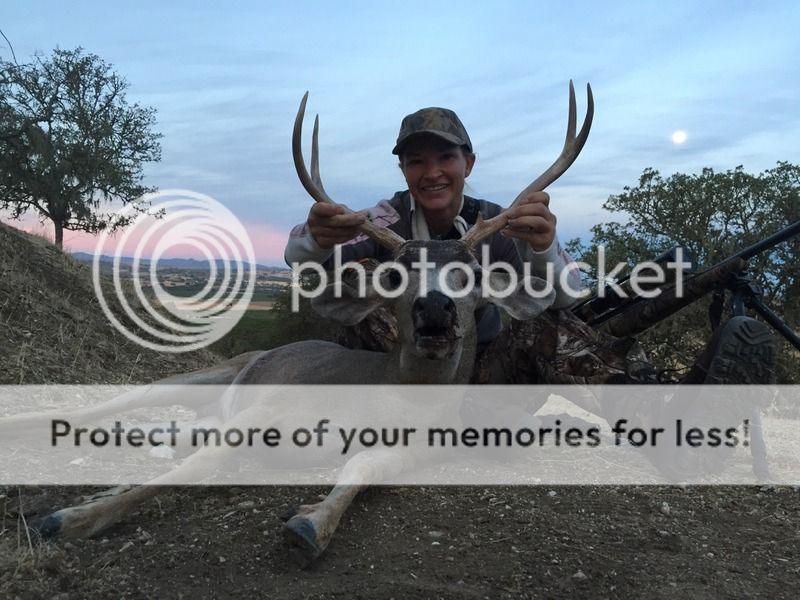Wedgy
Well-Known Member
- Joined
- Feb 9, 2013
- Messages
- 3,221
My girlfriend got her first deer in A zone Sunday and as I was skinning the head for a Euro mount I found some horrid looking worms attached to the nasal cavity. Whoa, these are hideous creatures leaches ? What the hell ?? I had never seen them before. Luckily she's a veterinarian.... low and behold they are bot fly larvae which are very common. From what I have read once the deer is dead they may crawl out so you might find the 1" long maggot worms in the back of your truck. I would be tempted to toss the deer...don't. They aren't harmful. Hideous yes, but just a pest. Plenty more reading but here is the gist of it. FYI
-------------------------------------------------------------
Deer nose botflies have been reported from nearly all areas of the continental U.S. and Canada. They have not been reported from the Great Plains, Ohio, Kentucky, Tennessee or Alabama. An unidentified species has been reported from white-tailed deer in Florida. Interestingly, the known distribution of the parasites does not completely cover the geographic range of potential cervid hosts.
Transmission and Development
The eggs of Cephenemyia hatch in the uterus of the female fly and while in flight she ejects minute larvae into the nostrils of the host deer. The larvae migrate to the retropharyngeal pouches which lie on either side of the throat at the base of the tongue. There they become attached in clusters and develop.
Developing larvae are white; while fully developed larvae are about 25 to 36 mm long and yellowish-brown. When the larvae have completed their development, they are expelled from the throat. They then seek a suitable place in the soil to pupate and after a relatively short pupal period (2 to 3 weeks) adult flies emerge. The adult flies have no mouth parts for feeding so they are short-lived and must mate shortly after emerging, thus completing their life cycle.
Significance
Cephenemyia species are known to infect only deer, and meat from these animals is suitable for human consumption, thus there is no public health significance. They are apparently well tolerated by white-tailed deer and cause no problems. However, C. trompe is considered to be a serious problem in domestic reindeer management in Scandinavia. It is estimated that in Sweden, the losses due to C. trompe and the grub fly (Oldemagena tarandi) amount to about 2 million Swedish crowns per year, which is approximately 15% of the income from reindeer production.
 Attached Thumbnails
Attached Thumbnails 
 Attached Images
Attached Images




-------------------------------------------------------------
Deer nose botflies have been reported from nearly all areas of the continental U.S. and Canada. They have not been reported from the Great Plains, Ohio, Kentucky, Tennessee or Alabama. An unidentified species has been reported from white-tailed deer in Florida. Interestingly, the known distribution of the parasites does not completely cover the geographic range of potential cervid hosts.
Transmission and Development
The eggs of Cephenemyia hatch in the uterus of the female fly and while in flight she ejects minute larvae into the nostrils of the host deer. The larvae migrate to the retropharyngeal pouches which lie on either side of the throat at the base of the tongue. There they become attached in clusters and develop.
Developing larvae are white; while fully developed larvae are about 25 to 36 mm long and yellowish-brown. When the larvae have completed their development, they are expelled from the throat. They then seek a suitable place in the soil to pupate and after a relatively short pupal period (2 to 3 weeks) adult flies emerge. The adult flies have no mouth parts for feeding so they are short-lived and must mate shortly after emerging, thus completing their life cycle.
Significance
Cephenemyia species are known to infect only deer, and meat from these animals is suitable for human consumption, thus there is no public health significance. They are apparently well tolerated by white-tailed deer and cause no problems. However, C. trompe is considered to be a serious problem in domestic reindeer management in Scandinavia. It is estimated that in Sweden, the losses due to C. trompe and the grub fly (Oldemagena tarandi) amount to about 2 million Swedish crowns per year, which is approximately 15% of the income from reindeer production.



